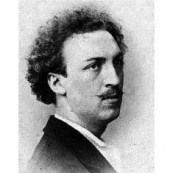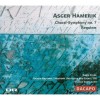| Country: | Denmark |
| Period: | Romantique |
Biography
Asger Hamerik (Hammerich) (April 8, 1843 – July 13, 1923), was a Danish composer of classical music.
Born in Frederiksberg (near Copenhagen), he studied music with J.P.E. Hartmann and Niels Gade. He wrote his first pieces in his teens, including an unperformed symphony. His family were friends with Hans Christian Andersen, with whom Hamerik would correspond regularly.
Later, he left Denmark in 1862 to study music in Berlin, with Hans von Bülow, and Paris where he was a protégé of Hector Berlioz. In 1864 he began using the more unmistakably Danish version of his last name, rather than Hammerich, in the swell of Danish national feeling after the Danish-Prussian war.
He left Paris in 1869 for Italy, and then Vienna. In 1871 he was offered the post of director of the Peabody Institute in Baltimore, Maryland, where his influence won praise from influential visitors including Tchaikovsky and Arthur Sullivan.[1] He composed most of his large-scale concert works for the Institute's orchestra. He left his position as director of Peabody in 1898. He returned to Denmark in 1900 with his American pianist wife, born Margaret Williams, but had essentially retired. He would sit on competition boards and conduct, including his own works.
He composed 41 opus numbers, including seven symphonies, chamber music, four operas, five orchestral suites and popular orchestral music, much of it based on Scandinavian folk tunes. During his lifetime he was considered the best-known Danish composer after Gade, and one who was primarily influenced by Berlioz. His Requiem was his most successful work, and the one he considered his best.
His son Ebbe Hamerik was a conductor and composer, and his daughter Valdis Hamerik an opera singer.
While relatively obscure today, Hamerik was an influential teacher in the US, as the director of Peabody in Baltimore for over a quarter of a century; and his works were performed in both the United States and Europe. The most obvious influence in his music is Berlioz, particularly given Hamerik's conscious choice of rooting his music in French influences, the French subtitles to his symphonies, and the use of an idée fixe. His music is often described as having a "Nordic" cast, and in letters he told friends that even though he was going to America he would always remain a Dane.
His later work incorporates influences from composers such as Paul Dukas and César Franck and the more roving harmony and extended tonality, including movements in different keys and expanded use of vagrant chords.[citation needed] His Seventh Symphony has been compared[according to whom?] with Mahler's works from the same period, involving hundreds of musicians in its first performance in Baltimore, which was directed by fellow von Bülow student Joseph Pache.







